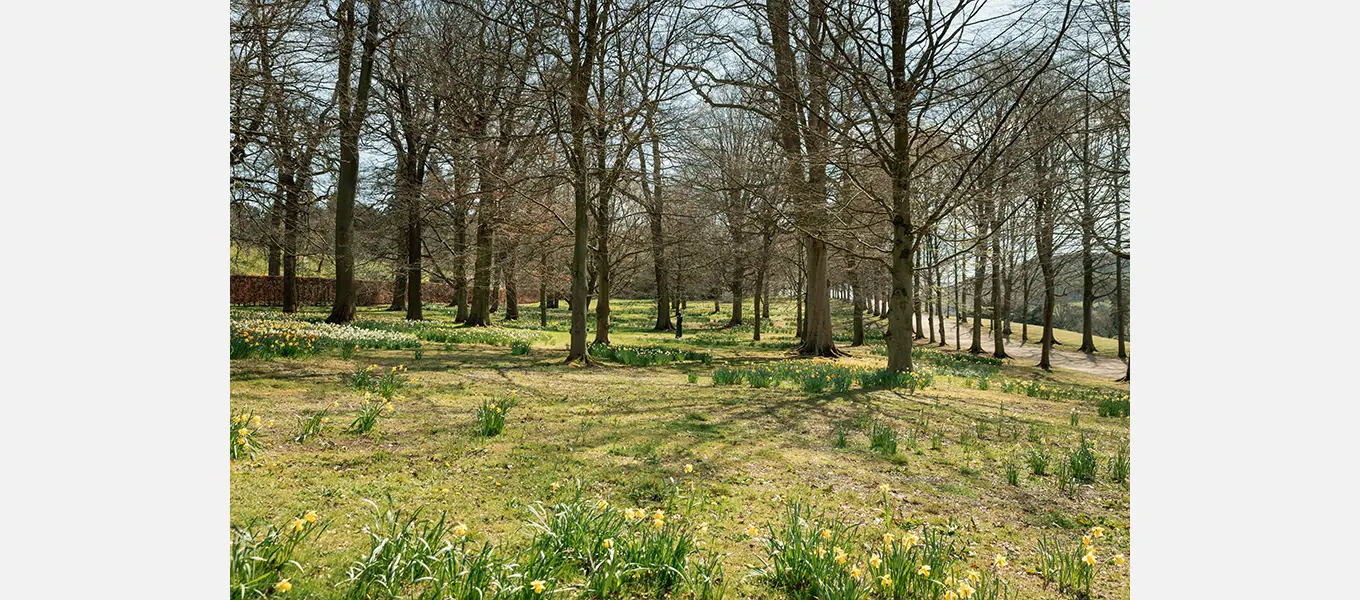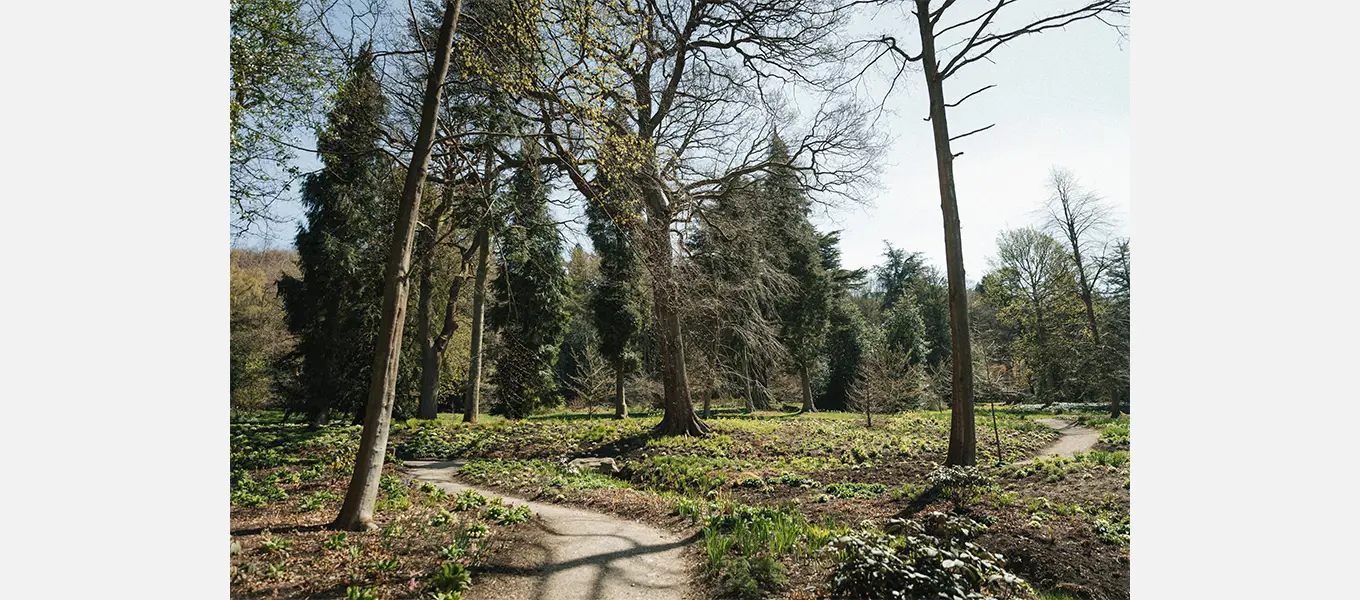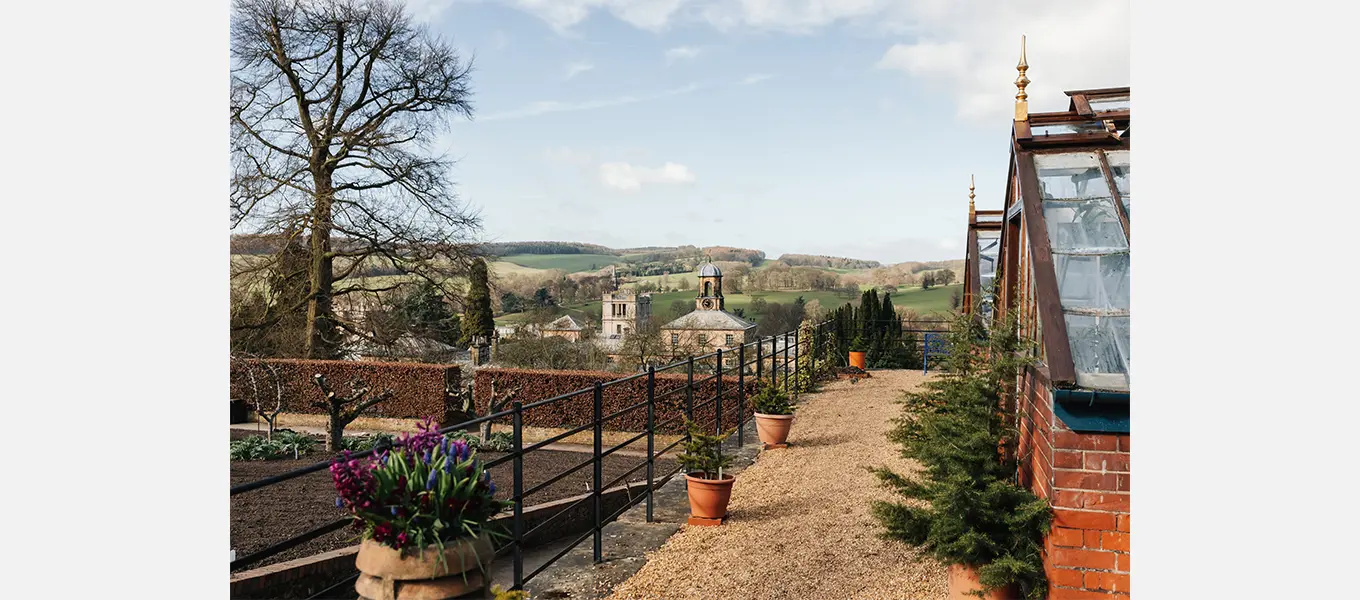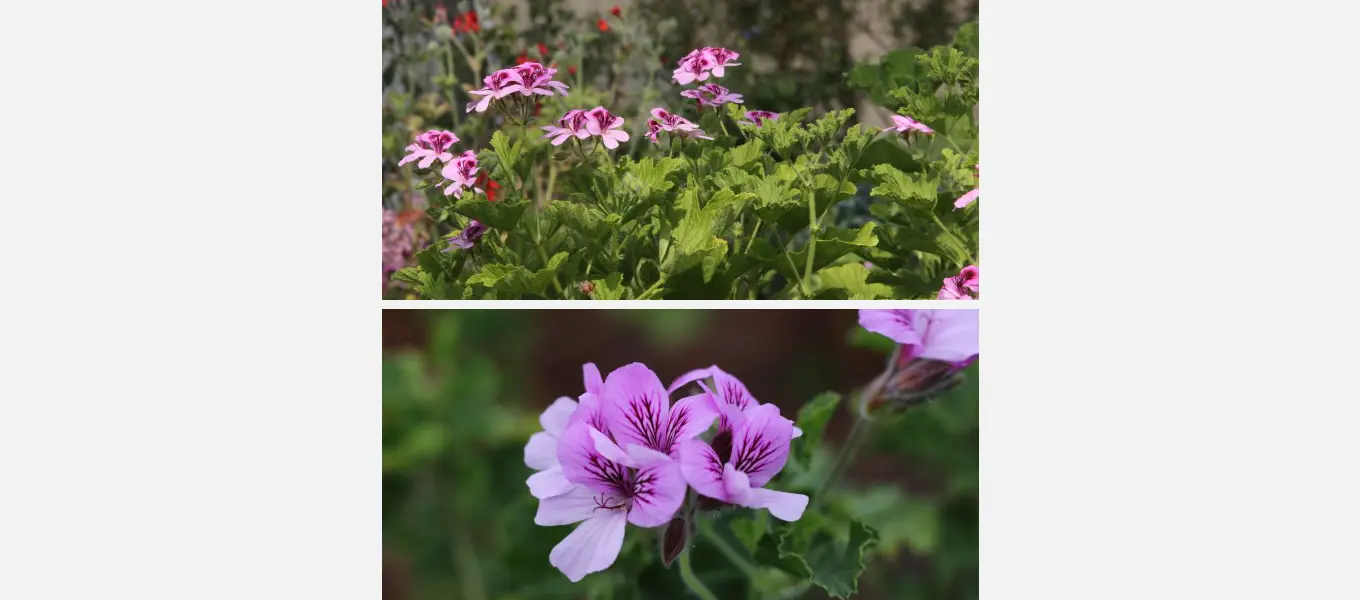Frosty mornings followed by sunny afternoons are giving the garden a crisp, spring feel. Daffodils are out en masse, tulips are just starting to colour up and many deciduous trees are beginning to break bud, revealing speckles of life amongst their twiggy crowns.

It’s exciting seeing the bulb layer emerge in Arcadia and the Rock Garden, much of it being seen for the first time since the project’s completion last autumn. Now is the time to see the patterns in the planting revealing themselves. The intricate mosaic of trees, shrubs, herbaceous perennials and bulbs have been carefully orchestrated by Tom Stuart Smith and Emily Asherton to have a long season of interest and mean that multiple visits throughout the year are a must.

Potted bulbs are also in bloom. To get dense and floriferous potful's of successional spring interest we plant our bulbs in layers, similar to the way the ingredients of a lasagne are used. The largest and latest flowering bulbs go in deepest, with the smallest and earliest flowering varieties planted on top. The emergent shoots of the lower levels bend round anything they hit sitting over their heads and keep on growing so will always manage to reach the surface to bloom. As more of the display comes into flower, the root mass below the soil becomes congested and will require regular watering and feeding to ensure the plants don’t wilt. Layering bulbs in this way allows us to create successional displays that add colour to the garden right the way through spring.

One of the many crops doing well in the greenhouses this month is our collection of over 25 varieties of scented pelargoniums (often known as scented geraniums) which we use to decorate the house and for seasonal interest in our pot displays. Their subtle flowers, which give them a delicate beauty, are distinct from their gaudier, blousy cousins frequently used in summer bedding displays, window boxes and hanging baskets. But, it is the highly aromatic foliage which, when rubbed, gives off a range of agreeable perfumes that really sets this group of plants apart from their showy relatives.

All of the varieties we grow are descended from species that are mainly found in South Africa and a few of its surrounding islands. They use the strong scent to defend themselves from grazing animals and to attract pollinating insects. Varieties descended from Pelargonium cordifolium give off a scent of apple; those from P. crispum smell citrusy; while other species have scents of cinnamon, coconut, hazelnut, ginger, camphor, balsam, peach, pineapple, myrrh and rose. In the 18th century, breeders began crossing these plants, selecting the most interesting and clearest scents that arose for mass production creating a trend for these plants to be used alongside other tender decorative specimens such as citrus and myrtles. Scented leaved pelargoniums are certainly making a revival. All can be used to flavour food; the edible flowers are a great decorative garnish for many desserts and puddings. When ripe, the foliage is also a long lasting, beautiful addition to any flower arrangement – they are certainly plants to consider growing at home.






